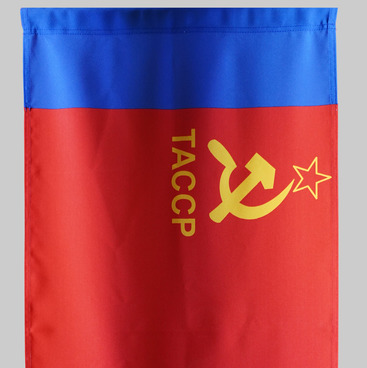The exhibit of The Museum of the History of Tatar Statehood and the Republic of Tatarstan keeps a unique leather product from the period of the Kazan Khanate — a bow quiver.
Quiver is a case for storing arrows. Its length was 54.5 centimetres, and its width ranged from 26.2 centimetres at the top to 13.4 centimetres at the bottom. There were blind seam traces found on the reverse side of the object, left by the belt fasteners.
Along the perimeter, the quiver was decorated with graceful embroidery in the form of a floral ornament, as well as the image of a zoomorphic creature — the winged dragon Zilant. Legend has it, the beast lived on a mountain near the place where the Kazanka River flowed into the Volga. Because of this, the mountain was named Zilantova, and this name was given to the Orthodox monastery built there in 1560. There was a version that Zilant was depicted on the seal of the Kazan Khan. After the conquest of Kazan, Tsar Ivan the Terrible transferred it to the state seal of the Russian State.
The case was found in the late 1990s as a result of archaeological excavations on the territory of the Kazan Kremlin near the Resurrection Gates. There used to be handicraft workshops near this place, in which leather shoes were made.
Kazan craftsmen of the mid-15th — first half of the 16th century were actively engaged in leather manufacturing. They were processing hides of horses, small ruminants, and cattle in order to obtain high-quality material: ‘yuft’, ‘safyan’, ‘bulgari’, ‘bashka’, ‘bakhtarma’, ‘kolonchak’, ‘khaz’, ‘yalovka’ and others. The skin made of hides of juveniles was soft, elastic, and water-resistant.
Leather was processed mainly by using traditional methods, which were widespread on the territory of Volga Bulgaria and the Golden Horde. The finished products of Kazan craftsmen were divided into groups according to their functional purpose: footwear, clothing, household products, weapons-related, and other products.
At that time Kazan was one of the major centres of leather and shoe manufacture not only in the Middle Volga region, but also in Eastern Europe. Leather goods of local craftsmen made up an important export share of the Kazan Khanate in trade with the Moscow State and the eastern countries.
Quiver is a case for storing arrows. Its length was 54.5 centimetres, and its width ranged from 26.2 centimetres at the top to 13.4 centimetres at the bottom. There were blind seam traces found on the reverse side of the object, left by the belt fasteners.
Along the perimeter, the quiver was decorated with graceful embroidery in the form of a floral ornament, as well as the image of a zoomorphic creature — the winged dragon Zilant. Legend has it, the beast lived on a mountain near the place where the Kazanka River flowed into the Volga. Because of this, the mountain was named Zilantova, and this name was given to the Orthodox monastery built there in 1560. There was a version that Zilant was depicted on the seal of the Kazan Khan. After the conquest of Kazan, Tsar Ivan the Terrible transferred it to the state seal of the Russian State.
The case was found in the late 1990s as a result of archaeological excavations on the territory of the Kazan Kremlin near the Resurrection Gates. There used to be handicraft workshops near this place, in which leather shoes were made.
Kazan craftsmen of the mid-15th — first half of the 16th century were actively engaged in leather manufacturing. They were processing hides of horses, small ruminants, and cattle in order to obtain high-quality material: ‘yuft’, ‘safyan’, ‘bulgari’, ‘bashka’, ‘bakhtarma’, ‘kolonchak’, ‘khaz’, ‘yalovka’ and others. The skin made of hides of juveniles was soft, elastic, and water-resistant.
Leather was processed mainly by using traditional methods, which were widespread on the territory of Volga Bulgaria and the Golden Horde. The finished products of Kazan craftsmen were divided into groups according to their functional purpose: footwear, clothing, household products, weapons-related, and other products.
At that time Kazan was one of the major centres of leather and shoe manufacture not only in the Middle Volga region, but also in Eastern Europe. Leather goods of local craftsmen made up an important export share of the Kazan Khanate in trade with the Moscow State and the eastern countries.



